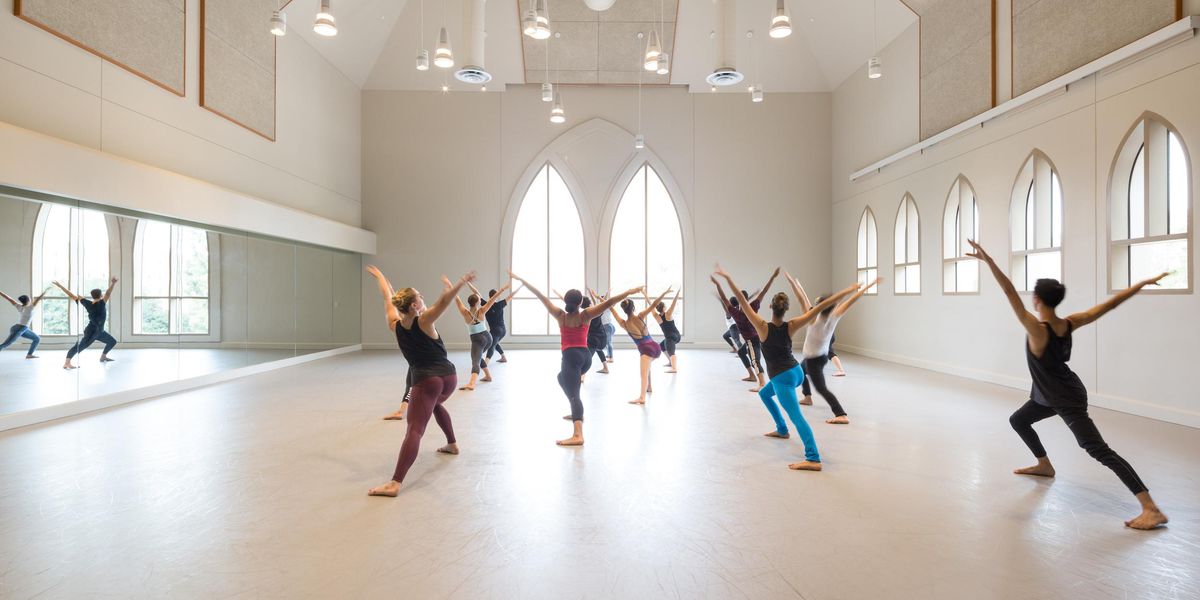On Broadway: Genie On Tap
Aladdin blends ethnic flavor and Broadway pizzazz.
Adam Jacobs (Aladdin) and James Monroe Iglehart (Genie) rehearse “Friend Like Me.” Photo by Matthew Murphy, Courtesy
Aladdin.
If you scan the impressive list of Broadway musicals directed and choreographed by Casey Nicholaw—that would include The Drowsy Chaperone, The Book of Mormon and, most recently, Elf—you might note that he always manages to make room for a memorable tap sequence. Nervous bridegrooms, Mormon missionaries and despondent Santa Clauses have all danced the Tony winner’s tap steps. But legendary characters out of the Arabian Nights? Nicholaw thought that was a bit of a reach, and his stage version of Disney’s 1992 animated feature Aladdin was going to have to get along without this signature audience pleaser.
“When we did Aladdin in Seattle,” Nicholaw recalls, “I didn’t have any tap in it, because it felt kind of gratuitous. And then everyone said, ‘Why don’t you put tap in it?’ And I said, ‘What the heck are you thinking?’ I was going to avoid it.”
But when Aladdin, with several new Alan Menken songs and a book by Chad Beguelin, starts previews this month prior to its March 20 opening at the New Amsterdam Theatre, yes, there will be 21 sets of taps striking the stage. It happens during “Friend Like Me,” the big, busy number in which the genie freshly sprung from his lamp introduces himself to his new master, the poor street kid Aladdin.
In the film, Genie, voiced by Robin Williams, is a jazzy, shape-shifting entertainer who momentarily sports a top hat and tails and even pulls off a few quick trenches. “He was originally drawn and conceived as Cab Calloway,” Nicholaw says, “and I thought, ‘You know what? Embrace it!’ The genie’s world is show biz, and anything goes.” So while the rest of the show’s dance vocabulary is more or less inspired by things you might expect to find in or around Agrabah—if Agrabah existed—“Friend Like Me” inhabits not Arabia but Broadway. So, Nicholaw believes, “You can do anything you want.”
As it happened, his Genie couldn’t do that. James Monroe Iglehart, whose rocking, kinetic rendition of “Big Love” was one of the standout numbers (among many) in Memphis, had been cast as Genie, and he’d never tapped in his life. “Once I decided to put tap in it,” Nicholaw continues, “I said to him, ‘Find a tap teacher.’ ” Iglehart took classes for six months, and Nicholaw sent him a video of his choreography for the number, slowed down and shot from behind. “He worked his butt off,” Nicholaw says, “and he came in and nailed all the steps.”
Iglehart’s linebacker physique might have worried another choreographer. But not Nicholaw. “I don’t look at him because of his size and say, ‘I’m not gonna give you this or that,’ ” he says. “The thing you have to keep in mind with any principal is, you have to do something that serves them well. He moves so well for a large guy—he is fantastic. But if he didn’t look good doing the tap, I wouldn’t be giving it to him. And I probably would end up cutting tap from the show, because I certainly don’t want just ensemble members coming in and tap dancing—I want the fun of having Aladdin and Genie doing it too.”
If the tap is there only for the fun of it, it hasn’t prevented Nicholaw from also playing around elsewhere. “I did all kinds of research,” he says, “but Agrabah is a fictional place.” He’s included authentically Middle Eastern touches—“We’ve got drums, we’ve got finger cymbals, we’ve got swords, we’ve got stilts”—as well as some decidedly inauthentic ones. “I’m Greek,” he points out. “I borrow from Greek dance, from traditional lines, from Bollywood—it’s a combination of the buoyant spirit and passion of ethnic cultures while also keeping it in our musical theater world.”
Needless to say, there are also harem girls with bare midriffs. But Nicholaw says he stayed away from the one style you’d think would be de rigueur in a Mideast-flavored musical. “We’ve got pretty much everything you can think of,” he says, “but we don’t have belly dancing. It doesn’t quite go with the score.”
From Backstage
Dance Captains:
Michael Mindlin (Bring It On: The Musical, 9 to 5), who’s a swing, and Nikki Long (The Lion King), who’s in the ensemble.
Associate choreographer:
John MacInnis (Book of Mormon), who danced with Nicholaw in the ensemble of Thoroughly Modern Millie.
Ensemble size:
12 men, 7 women, plus 4 swings. “It’s very male-heavy,” says Nicholaw.
Dance specialties:
Tap and “a bit of everything.”




